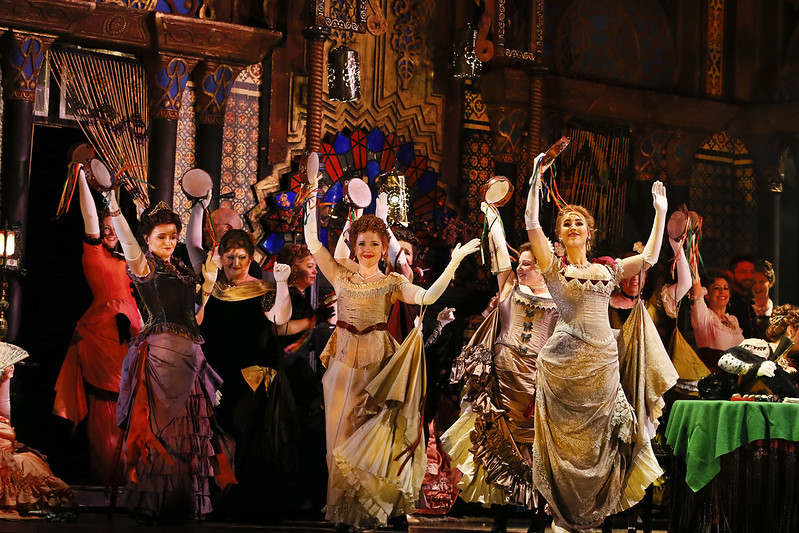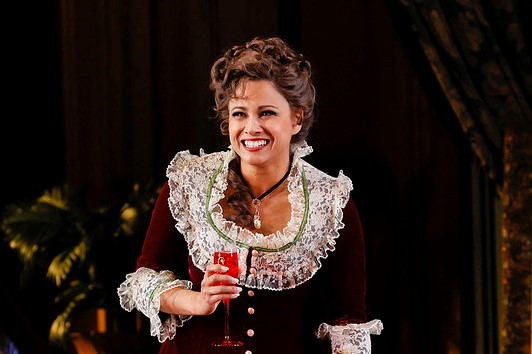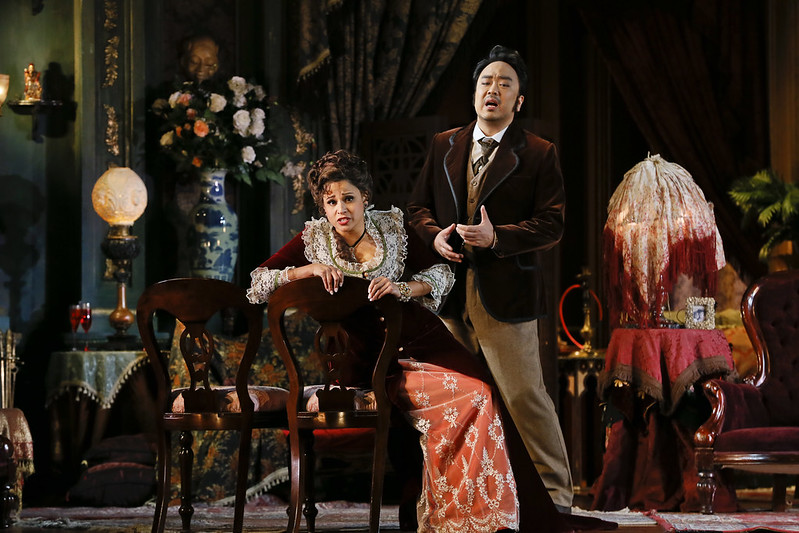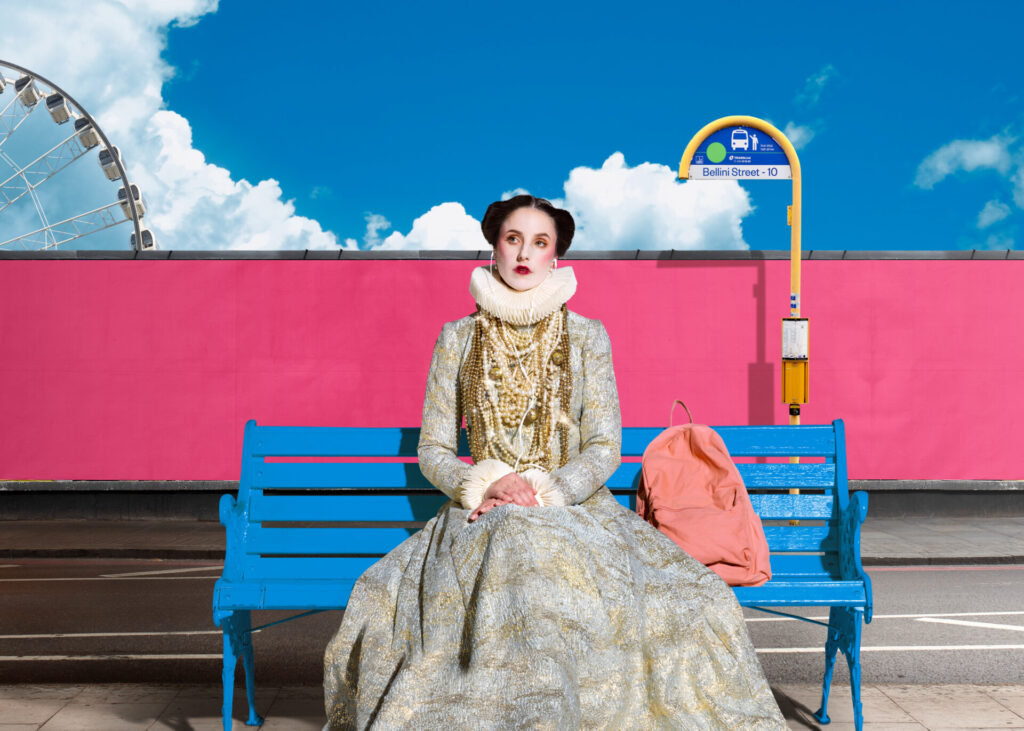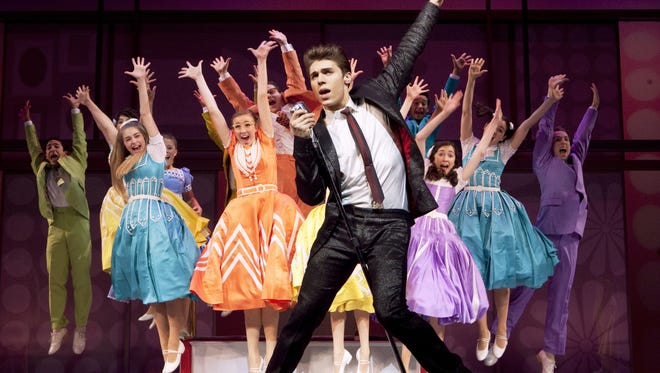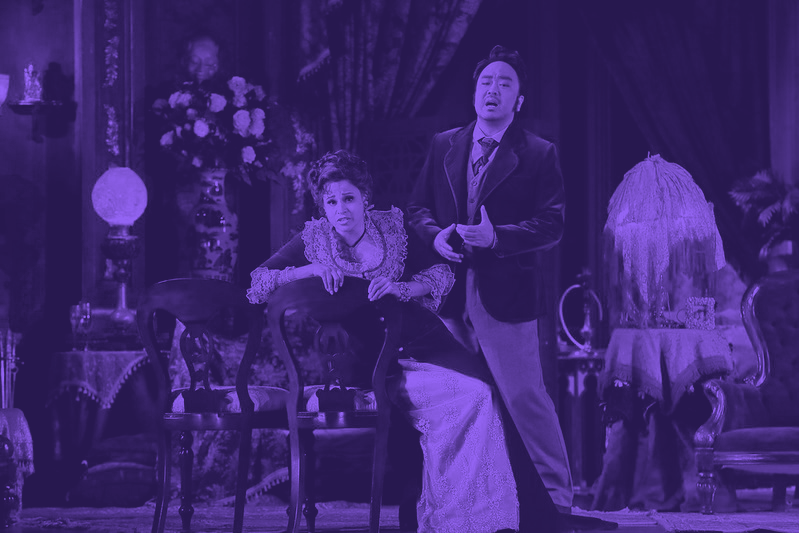
‘La Traviata’ // Opera Australia
‘La Traviata’ was real.
Detailing the plight of 19th-century prostitutes and what it means to sacrifice yourself for love, Giuseppe Verdi’s 1853 operatic masterpiece ‘La Traviata’ has had new life breathed into it at Brisbane’s own Queensland Performing Arts Centre, courtesy of Opera Australia.
Stripped to the bones, this production of ‘La Traviata’ focuses on the dilemma of Violetta, and generates a raw and powerful depiction of this tragic love story. Artistic director of Opera Australia, Patrick Nolan, stated that Opera Australia’s 2022 season will focus on the often ‘impossible’ depiction of women in opera, and this naturalistic production offers ideas that other productions have not.
‘La Traviata’, subtitled to depict “love, intensity, [and] heartache” tells the story of Violetta, an upper-class prostitute living in France at the turn of the 19th century, and delves into her pains in suffering from tuberculosis, and the joys of her romance with Alfredo. Split between her decadent lifestyle of partying, drinking, and wealth, and the chance of happiness with Alfredo, Violette decides she deserves a chance at happiness, so she sacrifices financial security to be with the man she loves. Her character is tested, however, when Alfredo’s father requests that she split off from Alfredo, stating that her position in society will ruin their family name.
This tragic story is elevated by Verdi’s symphonies that flow from beautiful to tragic, to chilling. The story itself deviates from the usual opera melodrama, offering a real conflict for its heroine, one inspired by Verdi’s own real-life events. It focuses on the internal conflict of Violetta and her choice to potentially sacrifice financial stability to be with the one she loves. Female liberation is at its core, citing societal treatment of women at the time of its creation to create this powerful story. Radical at the time of its release, it was demanded by authorities that the opera be set in the distant past, hoping these ideas would be filtered out as being ‘passé’. Verdi demanded the opera be set in his present, hoping it would act as a mirror to society at the time. Even in 2022, this mirror is still being held. The idea of a woman selling herself to appeal to the rich is a recurring event in modern society, as well as the ever-recurring question: is money more important than happiness?
Conductor Dane Lam elevates Verdi’s score to new heights in this production. Citing ‘La Traviata’ as a more ‘domestic affair’ than Verdi’s other works, which often depict royalty, Lam transforms ‘La Traviata’s’ rich, and compelling score to fit this idea of domestic living flawlessly. The show itself is raw and realistic in nature, and Lam’s orchestra blends into every inch of the scenery, making it feel truly separate from the world it inhabits. The gentle but sharp prelude perfectly depicts Violetta’s situation, the iconic ‘drinking song’ makes the audience feel as if they are at Violetta’s party, but as the show progresses and the characters are steered towards certain doom, the music grows, reflecting Violetta’s state of mind. With every cough and splutter from her, Lam, and Verdi, are there to elevate it to devastating heights with the opera’s score. What Lam has accomplished with ‘La Traviata’ is truly awe-inspiring, showing that no matter how many times ‘La Traviata’ is performed, there are still new ways to make it just as romantic and tragic as it was in 1853.
The sets and costumes were both flawlessly designed and brought to life by the brilliant Charles Davis. Inspired in lockdown by the artworks of Vilhem Hammershøi, Anne Françoise Couloumy, and Edward Hopper, Davis’ set design differs from traditional opera sets in its minimalist and natural approach. The home of Violetta begins with colourful bedroom wallpaper, sleek, modern furniture, and an overall beautiful blend of 19th century and modern architecture. As the show goes on, however, the set becomes more barren, more lifeless, a caricature of what it once was and now perfectly reflecting the physical and mental state of Violetta herself. All she has by the show’s end is a chaise lounge where she spends her final days. This, combined with a beautiful tree hidden behind her home, place the audience directly in the mind of Violetta herself, offering a richer viewing experience.
Costumes depicted the ambiguous time period beautifully, blending 19th-century fashion such as bodices, and layered petticoats, with the more modern fabric patterns and designs from the likes of Vivienne Westwood, Valentino, and Dior. This blending of time periods through costuming and set design help to amplify the prevalence of the opera’s story in the modern era, fulfilling Verdi’s original intention to have audiences feel as if they are a part of this world. That they too, are at these decadent parties and are living far beyond their means. Through sets and costumes, Charles Davis honours Verdi’s original intention, while bringing his own touch of class and artistic genius to the production.
Lighting designer Paul Jackson generates a domestic mood through simplistic but nonetheless effective lighting, amplifying the realistic style of Davis’ sets. He creates seemingly natural light on-stage at all times, making the audience feel as if they are watching the opera through a window directly into Violetta’s Parisian home. The opening party sequence, followed by Flora’s house party in the second act, depicts nighttime with gas lamps and a single chandelier, bringing the time period to life and putting audiences directly in the era. Later in the show, the back of the set is removed to reveal a beautiful tree set against a brightly lit backdrop. This backdrop perfectly encapsulates the mood of the scenes and creates a hauntingly powerful image to leave the audience with as the curtain drops.
When conceptualising ‘La Traviata’, director Sarah Giles pondered tropes found in opera, particularly the tropes recurring within its female characters. These female characters often have the same plotlines; they are either virgins, raped, or die in the end, sometimes all three can be found in the same show. Analysing the source materials of ‘La Traviata’, as well as real-life courtesan accounts from their time, Giles decided now more than ever is the perfect time to renovate ‘La Traviata’ to reflect our current social state, with gender politics playing a large role in what makes this production so powerful. The question of who society deems ‘worthy’ of redemption is brought to the fore, and the character of Violetta is transformed in a way that reflects these ideas. This is the best ‘La Traviata’ has been, and it is the reason why Giles believes these older shows should not be thrown away, but constantly revived.“Examining the present through the prism of another era is extremely useful. It’s why we continue to re-stage the classics; we can learn so much about our present selves from our collective pasts,” she said. The direction of the performers is inspired. It’s raw and real without sacrificing what makes the opera so powerful. The music direction perfectly complements the narrative, from timing Violetta’s sick coughs with the music, as well as Alfredo’s pained cries of heartbreak, all of which add to the authenticity of the production.
Blocking drives home the homely set and Violetta moves around her home as if she’s truly walked those halls many times before. The interactions between Violetta and Alfredo feel real, under the guise of intimacy coordinator Michelle Miall. Violetta and Alfredo are willing to sacrifice anything for one another within months of dating, and Giles’ direction captures their whirlwind romance.
All these elements combined make for a beautiful show, but it is the performers are the people who truly bring the story to life. Every actor in this production show why the voice is considered a musical instrument, and every actor on that stage – ensemble or leading – created their own orchestra with their musical capabilities.
The standout of the show, of course, was the incredible Lorina Gore with her spellbinding performance as Violetta. The only thing as good as her acting was her jaw-dropping soprano singing. Gore brings such versatility to the role, performing as a hopeless romantic, as well as a woman trapped in a prison of her time. Her timing was similarly flawless and never seemed to overdo it. Dying on stage – especially in an opera – can look silly and cartoon-like. Gore never stooped below the bar of realism, and truly created a haunting finale. It truly was a performance for the ages.
Kang Wang as Alfredo, is the perfect compliment to Gore, with a powerful tenor voice that blends perfectly with her soprano like a fine wine. He also made belting seem as natural to him as breathing, and his performance really made me feel for Alfredo as a character. He seems naive and caught up in something beyond his control, and by the finale, you truly feel his pain. His chemistry with Gore is off the charts, and his performance never feels hammy or too much.
José Carbó was perfectly cast as Alfredo’s father Giorgio, with his baritone bringing a mature and powerful presence to the stage, while also showing vulnerability and even an underline of guilt to his performance. His duet with Gore in Act 2 is lengthy, but their combined performances never made audiences feel the runtime. As the show went on, his character’s guilt was heightened progressively, like a ticking time bomb, before exploding with sadness at the show’s climax.
Hayley Sugars brought lively charm as Violetta’s friend and fellow courtesan Flora, bringing ferocity and owning the stage in every scene she was on. Her physicality fit her character perfectly, providing slight comedic relief in moments where it was desperately needed.
Finally, Shaun Brown made the Baron less of a cartoon villain, and more a petulant man-child not being allowed to play with his favourite toy, providing a gross mirror to the higher-ups in our current world. The ensemble, like before, all flowed flawlessly, creating such a powerful viewing experience for audiences of all ages and backgrounds.
‘La Traviata’ is a triumph on all accounts, with flawless acting, music, visuals, and a message that will ring true to audiences long after they leave the theatre. In partnership, Opera Australia and director Giles, have succeeded in their aim to modernise and renovate female depictions in opera with ‘La Traviata’, and chose the perfect time to do it. This is no simple opera where audiences can cheer for the heroes and boo for the villains. The form depicts real people in real situations – no matter what time period they inhabit. This core idea is where the show succeeds most. No matter whether you care for the opera or not, this is not a show to miss.
‘La Traviata’ performs until Sunday, 23 July 2022 at QPAC. For more information visit QPAC’s website.
Photography by Jeff Busby




